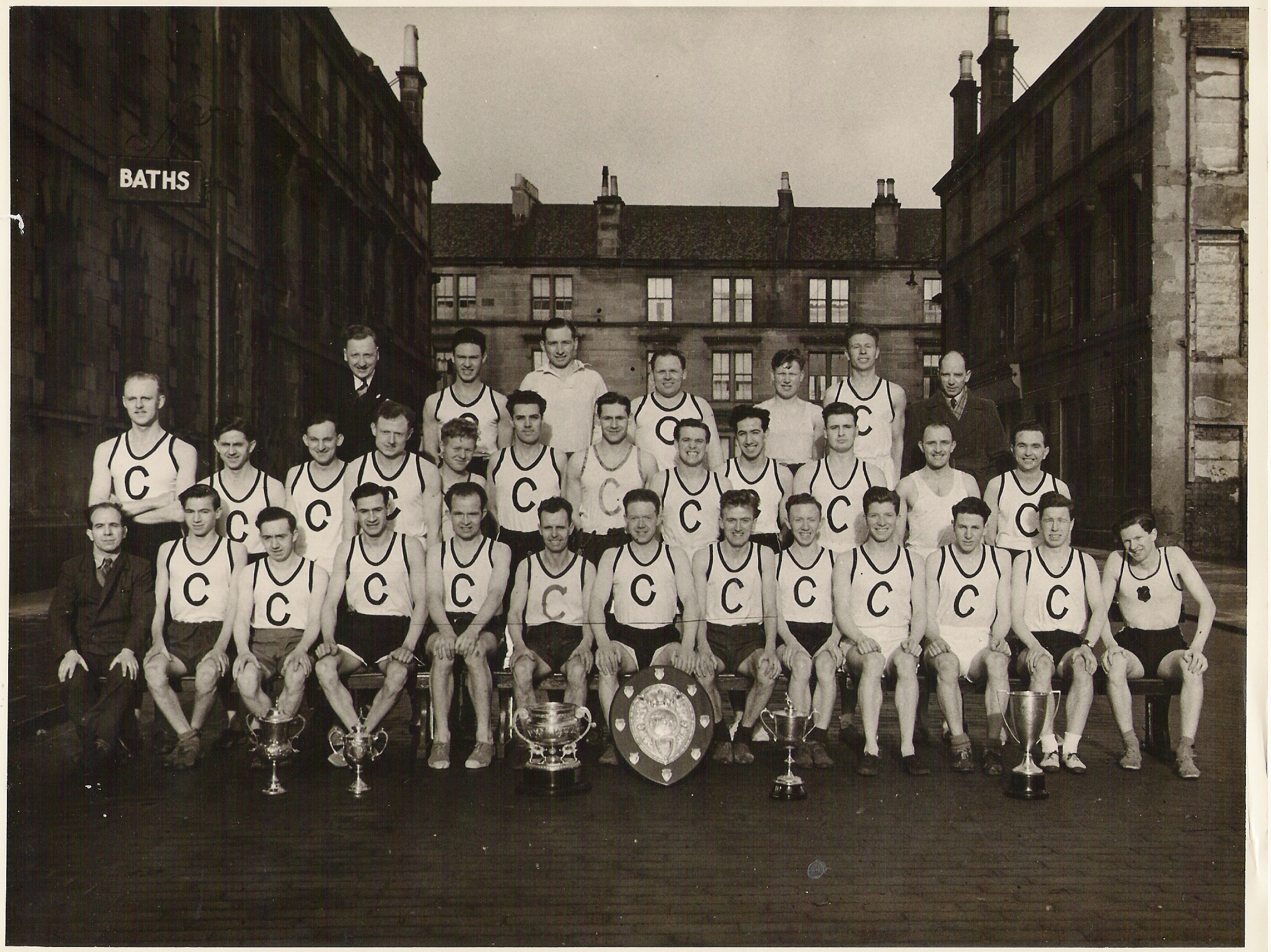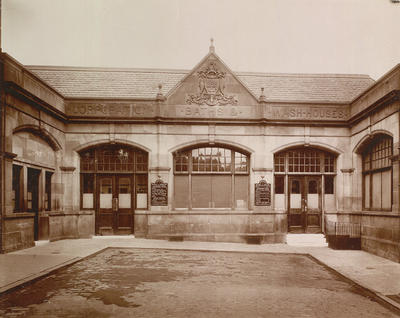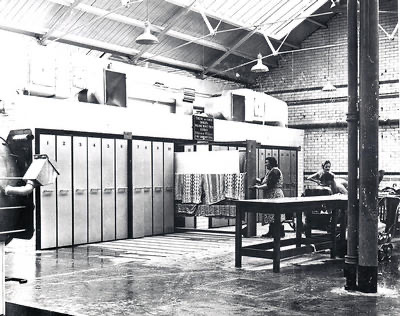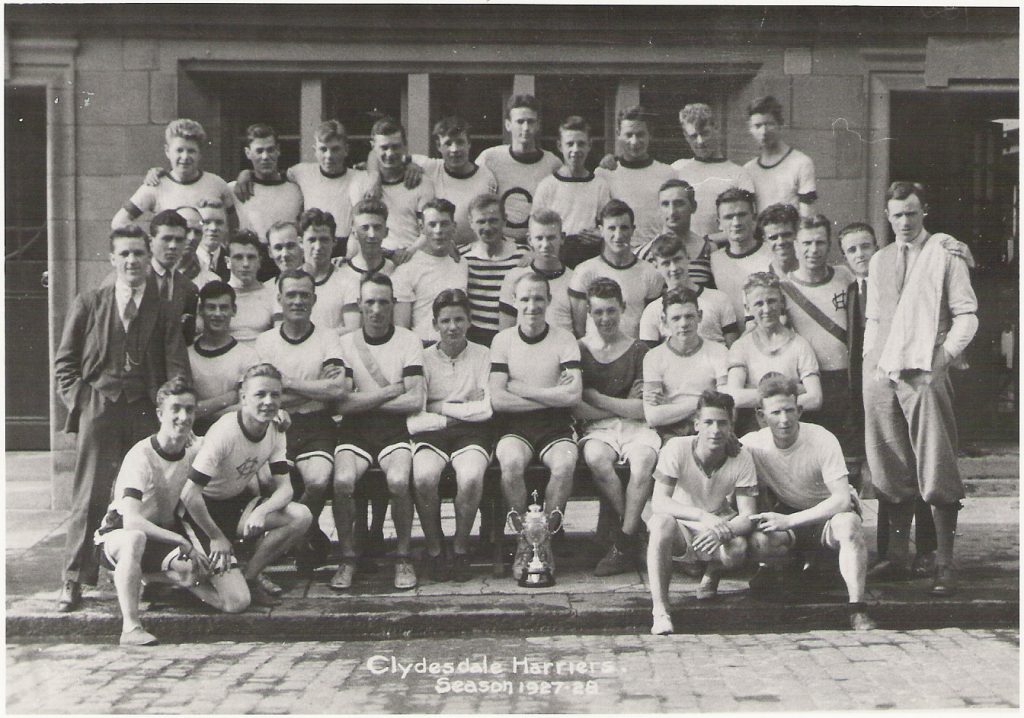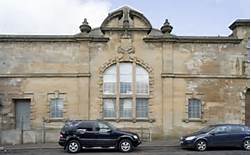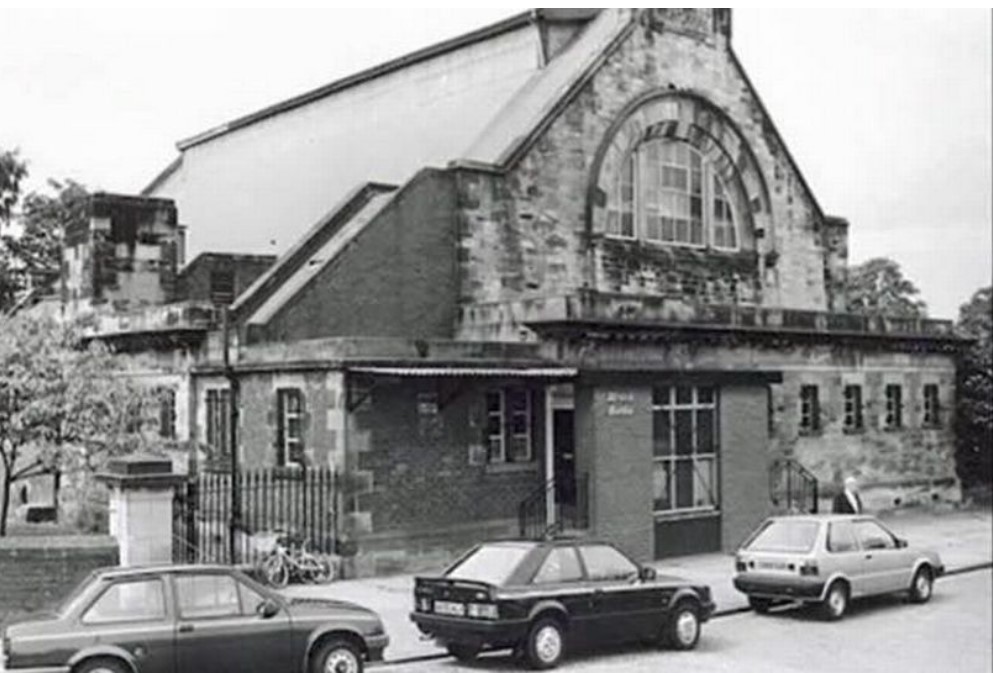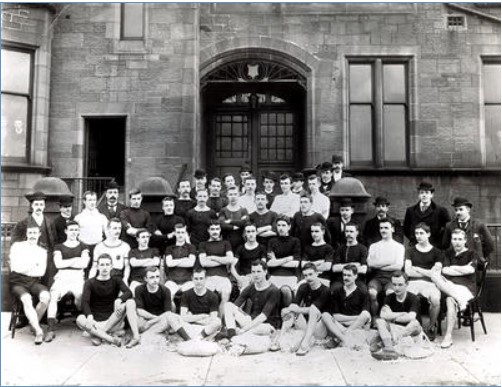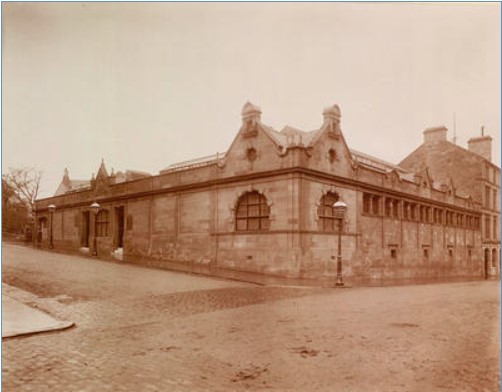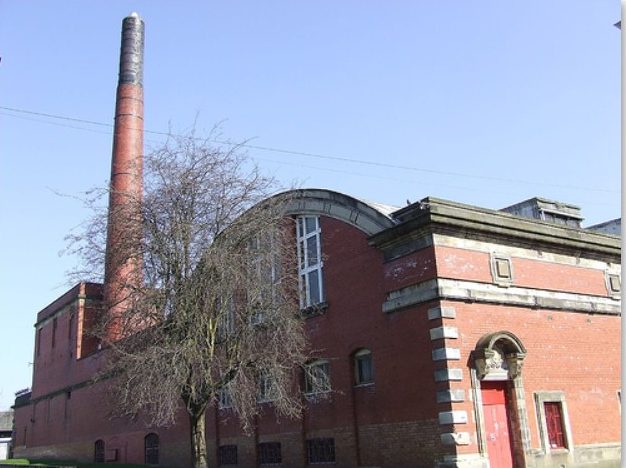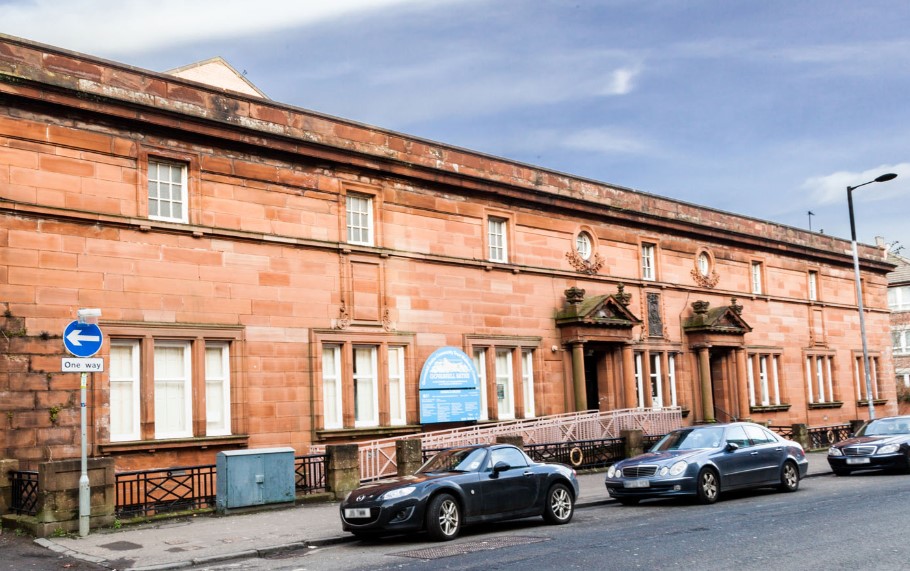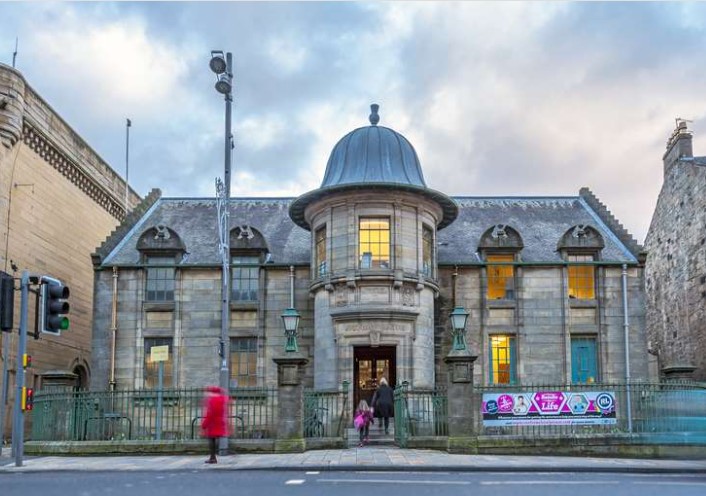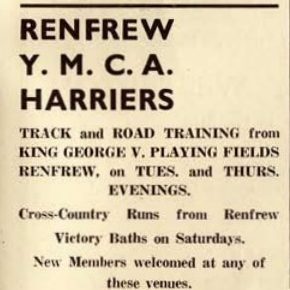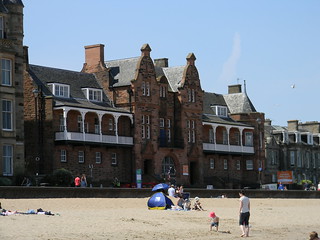This page shows some of the Baths used by harriers and goes into some detail about the design and manufacture of the buildings as an illustration of the quality of design and building in which the sport was nurtured.
They were not poor buildings for poor people, they were quality buildings for human beings.
Maybe the first with a connection to a harriers club was the Greenhead Baths at the east end of Glasgow which was used for varying short spells by a variety of short lived clubs. Opened in 1878, this facility replaced the old public wash-house, which was knocked down in 1876. Hamish Telfer mentions some of the older clubs linked with the harrier clubs, many long defunct, as follows:
See also: The Baths Themselves What was a ‘Steamie’? ‘What harriers said and thought about the Baths‘ The Calder Street Baths
Kay Street Baths, the original Soringburn Harriers HQ
This detail is from the Hidden Glasgow website: Kay Street Swimming Baths and Public wash-house:
Opened in the early 1890s. As well as a swimming pool, Kay Street provided bathing facilities for Springburn’s tenement dwellers whose houses often had no separate bathroom and for whom a bath at home meant a zinc tub in front of the fire, the water often being used in succession by several members of the family. Women who had inadequate laundry facilities at home, or who had missed their turn in the communal wash-house in the back court, or who simply preferred the social contact of the ‘steamie’, would bring their washing to Kay Street where they could hire tubs, washboards, wringers and drying machines. However, the building fell into dilapidation and was demolished at the time of the construction of the new bypass, which runs right behind the site of the old baths. A new sports and leisure centre was opened in 1995 .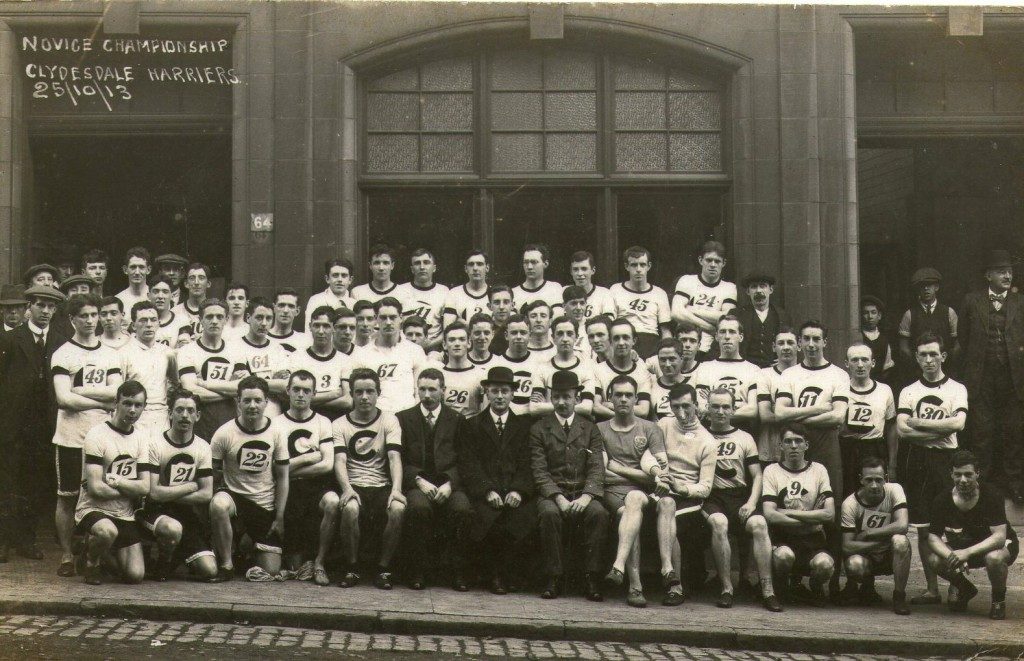
Clydesdale Harriers outside Whiteinch Baths, 1913
Although this photograph is of Clydesdale Harriers in 1913, it was known as the winter quarters of Victora Park AAC from their inception in 1930 until the motorway was built over the roads that were used for training purposes n the 1960’s. Many of the very best runners that Scotland produced trained from there – Ian Binnie, Andy Forbes, Hugh Barrow and many more graced the premises. Like Kay Street, it was also a Baths and Steamie. The following notes are from ‘The Glasgow Story’
‘The Whiteinch Public Baths and Wash-house were built next to the public halls and the building contained a large swimming pond 75 feet by 35 feet 6 inches; a small pond of 40 feet by 20 feet; sixteen slipper baths for ladies and thirty-one for men; forty-three wash stalls; sixteen washing machines and (from 1926) a Turkish bath with room for twenty people. Sun lamps were installed in the 1930s.’
The illustration below shows the big lockers at the side. I don’t know what the purpose was during the day, but it was where the runners of Victoria Park hung their kit which came out baked stiff but dry.
Many Victoria Park club championships were run from there but the main event for decades was the McAndrew Relay, the start of the cross-country and road season, held on the first Saturday of October every year.
Hall Street Baths, Clydebank, were part of a block including some tenement homes and the Fire Station, and the original finish for the runners in the Balloch to Clydebank race..
The big window at Bruce Street Baths in Clydebank. Described officially as : The Bruce Street Baths was designed to replace the nearby Hall Street Baths (now demolished) which were becoming too small. The plans were approved by the Council in 1929 and the baths were opened in 1932. It originally had a variety of facilities, including Turkish Baths, Russian Vapour Baths, a laundry and a massage room. (Historic Scotland) The men were quartered in the two big basement rooms with communal showers, the Ladies were upstairs with individual baths (there were 22 ‘slipper baths’. Like many, it was a superb bulding in its own right made to the highest standards and a real asset to the town. The Harriers used it for training (Tuesday, Thursday and often Saturday and races were organised therefrom – club and County championships as well as the two open road races mentioned above. Only the facade remains today of the Bruce Street Baths, the rest having been destroyed.
Brock Baths, Dumbarton
From The Lennox Herald: The Baths were named after the man who was the leading partner of William Denny and Brothers from 1895 to 1907. He left £10,000 in his will for such a purpose and work began on the building in 1912. The architect was Alexander C Denny, a grandson of John Denny, the former town clerk of Dumbarton. The swimming pool was 75 feet long and 30 feet broad and there was a gallery to accommodate about 100 spectators. The official opening of the baths took place on June 13th, 1914, and was performedd by the son and daughter of Walter Brock, who gave an endowment of £4000 to help maintain the baths. During the first few days of opening, the baths could not cope with the numbers of people wishing to use the facility. The cost of an adult swim in 1914 was 2d and a swimming costume could be hired for 1d ( a penny).
Dennistoun Baths Harriers, (c1900) ‘The Glasgow Story has this to say:
Dennistoun Baths Harriers before setting off for a “hare and hounds” race c 1900. John Wilson is on the end of the third row on the right hand side. Dennistoun Baths opened in Craigpark in 1884 and was privately run for members only until it closed in 1993. Apart from access to a swimming pool and Turkish Baths, members could also join various clubs which were affiliated to the baths, such as the harriers club (for cross-country running)
Maryhill Baths & Maryhill Harriers
Maryhill Swimming Baths: Entry for the Harriers was from Gairbraid Avenue but generally from Bunhouse Road. Another superb building, builtwith the style and quality that Glaswegians were brought up to expect. Infinitely preferable to the functional boxes that passed for architecture in the 70’s and 80’s. It was the venue for the Nigel Barge Road Race – run over approximately 5 miles on the first Saturday of the New Year. Opened on 30th May 1898.
Glasgow Office of Public Works, A B McDonald, City Surveyor 1896-1898. 1- and 2-storey originally roughly square plan Baroque former baths and washhouses. Polished red ashlar sandstone. Side elevations now rendered. Steeply sloping corner site .
BURNHOUSE STREET ELEVATION: single storey, 10-bay with gables over central bays and bay to right. Roll moulded and keystoned openings. Central segmental arched window with gable above with Glasgow coat of arms, flanked by square headed doorways with two-leaf timber doors and fanlights and with inscriptions above, WASHHOUSE to left and PUBLIC BATHS to right. Wider segmental arched doorway to far left. Large round-arched window with Gibbs surround at far right (matching window on adjoining elevation) to former committee room (later manager’s office).
GAIRBRAID STREET ELEVATION: 2-storey 10-bay with blind openings to ground floor. Large round-arched window in bay to left; Ionic colonettes dividing windows at first floor.
Pollokshaws Baths & Bellahouston Harriers
As used by Bellahouston Harriers. The Glasgow Story says – “The red brick building was designed and constructed as a baths and wash-house around 1920 by the Corporation’s Office of Public Works. It was converted into Pollokshaws Sports Centre in the 1980s. A proposal by Glasgow City Council to close the centre in 1999 was resisted successfully.
Calder Street Public Baths & Washhouse
West of Scotland used these – the Govanhill Baths – for many years having also used the Maryhill Baths. The Glasgow City Archive tells us that “The baths were designed by A B McDonald and opened in 1917 after the architect’s death. They contained hot baths in the upper storey and three swimming pools on the ground floor. There was a seating gallery around one of the pools for spectators attending events such as galas. There was also a wash-house or “steamie” at the rear of the building” It was described in 2022 as a listed building, category B and Glasgow’s last Edwardian public bath house by the Historic Pools of Britain group. It is one of only two Scottish pools listed, the other being the Western Club in Glasgow. Like all the pools on this page, the building was architect designed and made to very high standards.
Renfrew Victory Baths & Renfrew YMCA
(Photograph from a Visit Scotland brochure) The Baths were used by Renfrew YMCA Harriers after the Second World War. The Paisley.org site says: Renfrew (Victory) baths is an Edwardian building with a 25 yard pool and 1920s layout of cubicles around it, arched doorways and a viewing gallery. In the entrance there is a huge war memorial listing at least 1,000 names of Renfrew men lost in the 1914-18 War. The whole story of how the Baths came to be, how they were donated to the Burgh (complete with the text of the letter making the offer), the condition that it would house the names of the war dead is on an interesting video at Renfrew Victory Baths is 100 – YouTube
The ad below is from the ‘Scots Athlete’ Magazine of September 1947.
Portobello Public Baths & Edinburgh Southern Harriers
Portobello baths were opened in 1901 and described as ‘one of the jewels of Victorian architecture in Scotland’. An open air heated swimming pool was later added: among those who served as lifeguards was a young Sean Connery.
